We camped just south of Mazatlan and headed across the bay in a water taxi the following morning. Heading for the old historical district, we entered the beautifully restored Teatro Angela Peralta and while we were in the theatre a dance group was rehearsing and we were treated to a private performance in the beautiful theatre.
Enlarge
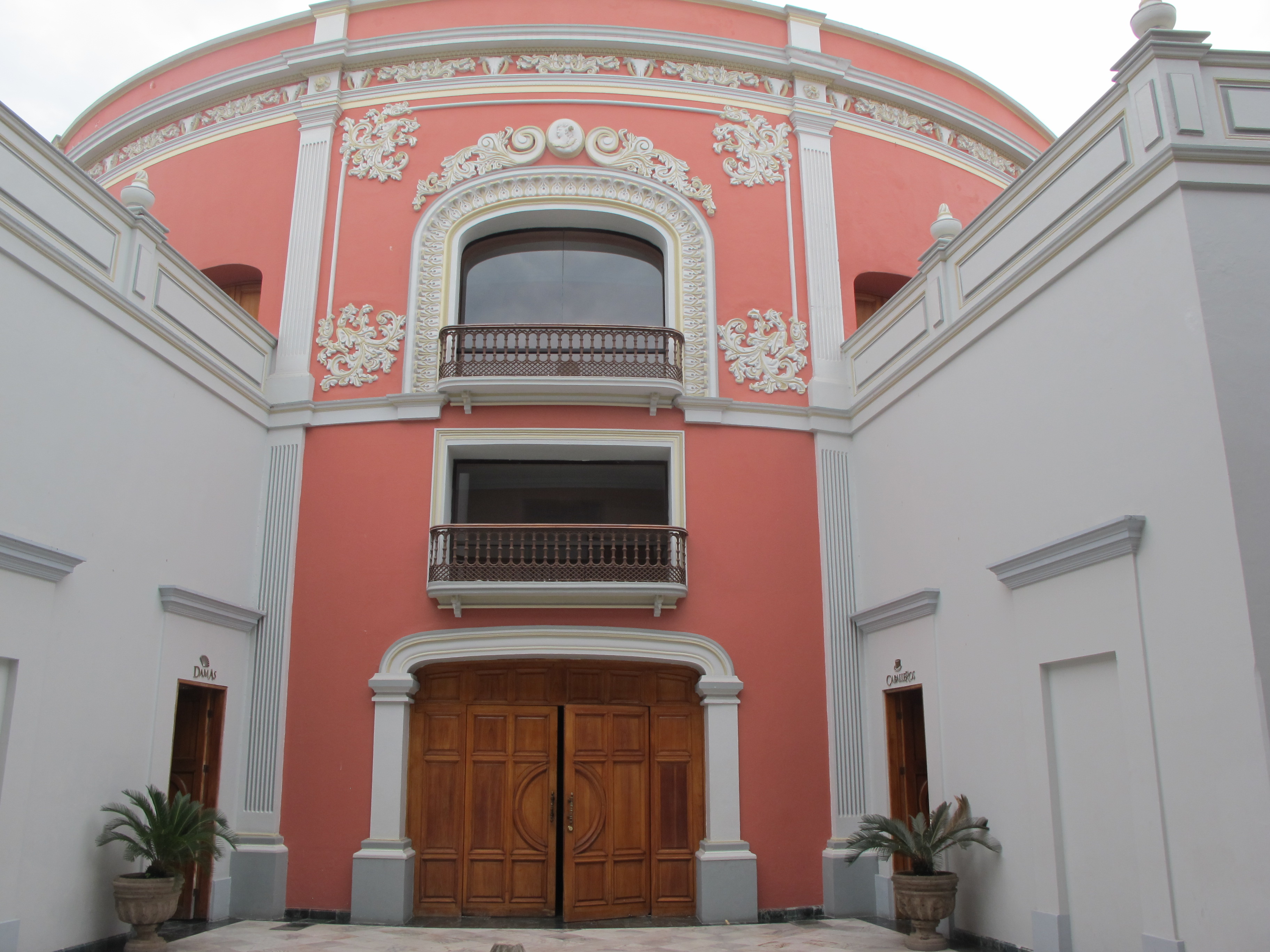
Adventurouspirits
Enlarge

Adventurouspirits
We wandered through the narrow streets to plaza that was filled with vendors, shoeshine vendors, children feeding the pigeons, old men chatting and women selling food. Soaring over the plaza is a 19th century cathedral with its high yellow twin towers. We stopped for chocolate cake and coffee in the Plazuela Machado before beginning a several kilometre walk along the “malecon” or shoreline of Mazatlan. Mazatlan has beautiful beaches but there are few tourists and many little establishments are closed.
Enlarge

Adventurouspirits
Enlarge

Adventurouspirits
We arrived at Teacapan hoping to take a little boat into the estuary to do some bird watching but the weather did not cooperate so we used the time to attend to some household tasks such as washing. We also bought some shrimps from a lady on the beach
Enlarge
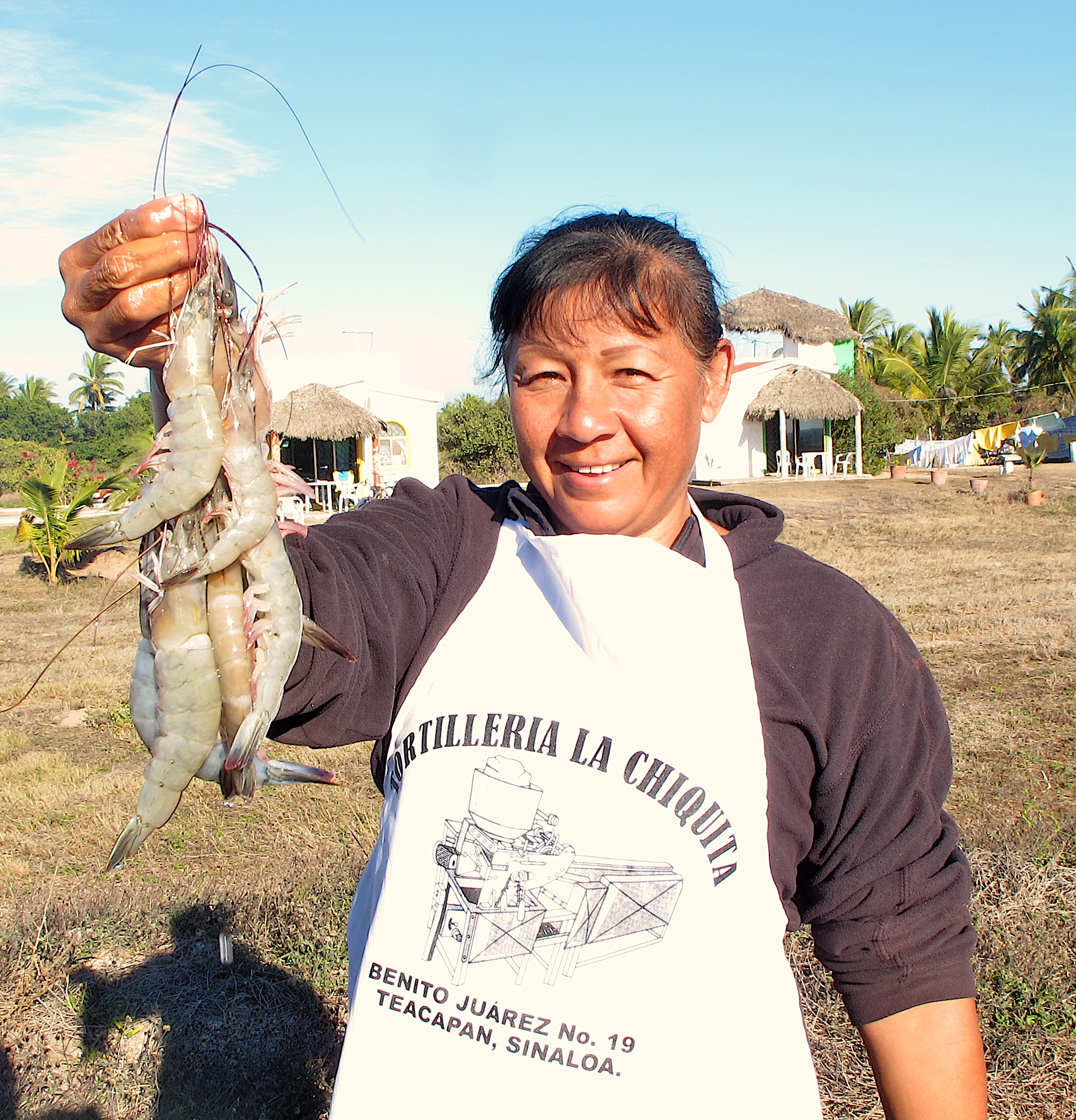
Adventurouspirits
I was sitting enjoying the view when Tom returned from the laundry looking very sheepish.
“I am not even going to tell you what I did,” he muttered under his breath not wanting to look at me.
“What is the washing not finished yet?” I asked.
“No but I did put the dirty washing into the machine, added the washing powder and put in my money and pushed the start button”
“So what’s the problem?” I asked.
“It wasn’t the washing machine it was the dryer. I put the dirty washing into the dryer and now I have load of hot dirty washing and I am out 30 pesos” he replied.
What could I say; I just burst out laughing and it is confirmation that a man really does need a woman in his life.
Enlarge
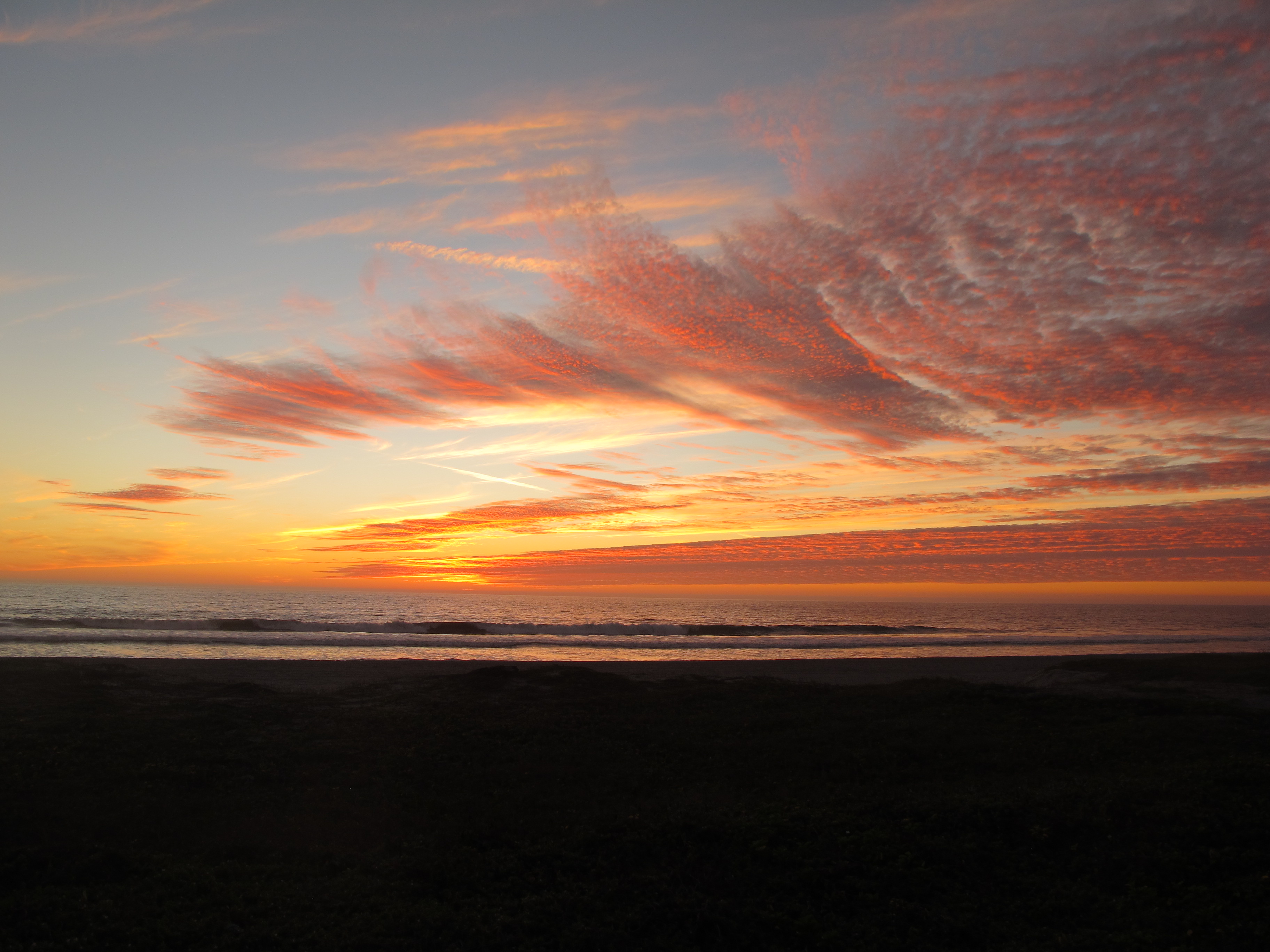
Adventurouspirits
We headed into the interior of Mexico to visit some of Mexico’s colonial cities. I just love the Spanish names of the cities and it is a great opportunity to practice my Spanish pronunciations; Guadalajara, Guanajuato, Queretaro and San Miguel de Allende. We set up camp just outside Guadalajara and took a wild ride on the local bus into the city. Holding on for dear life in a packed standing room only bus we careered through the traffic of Mexico’s second largest city. Large speed bumps are hit at high speeds, which resulted in our arms feeling as if they were being pulled out of their sockets. The bus barely comes to rest at their designated stops and we hang onto the moving bus scrambling to get either on or off. We watch the large crucifix of Christ that hangs in the front window in front of the driver, red lights flashing on the crucifix each time the driver hit the brakes. A bus ride is the wild side of Mexico and we need faith to travel on them.
Enlarge

Adventurouspirits
Like most Mexican cities, the center of Guadalajara is dominated by a large and impressive cathedral overlooking a lovely plaza surrounded by large shady trees. Life is bustling beneath the trees, children playing, women selling crafts, men shinning shoes and vendors selling tasty snacks. Inside the main cathedral, we watch as the locals gather around a glass case containing a statue of a young 12-year-old girl that includes her actual hands and dried blood. Known as the martyred Santa Inocencia she supposedly died protecting her virginity. Whether it is a myth or the truth is perhaps irrelevant what is more important is the belief and faith of those who pray to her.
Enlarge
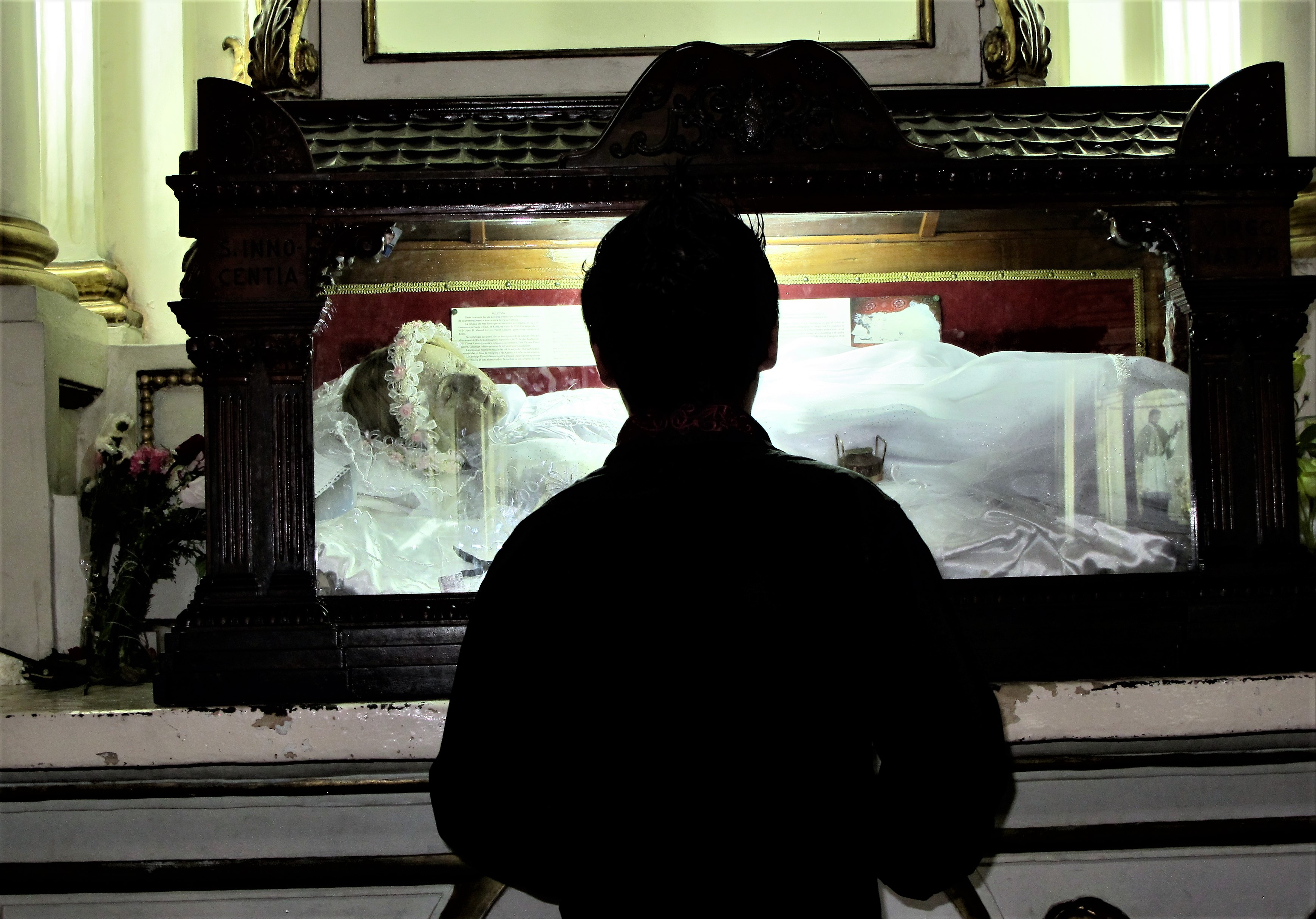
Adventurouspirits
We stop for lunch alongside Teatro Degallodo and I have fried coconut in a salad, which was delicious. Afterward we head off to see the mural of Miguel Hidalgo painted by Jose Clemente Orozco at the Palacio De Gobierno. Mexico has some stunning murals as after the Mexican Revolution young artists were commissioned to paint a series of public murals to spread a sense of Mexican history and culture. We gazed in awe at the stunning mural over the stairway in the Palacio De Gobierno, and began to get a sense of the immense struggle the Mexicans had in order to get their freedom.
Enlarge

Adventurouspirits
Enlarge

Adventurouspirits
Some of the toilet facilities at the campsite left us wondering.
Enlarge
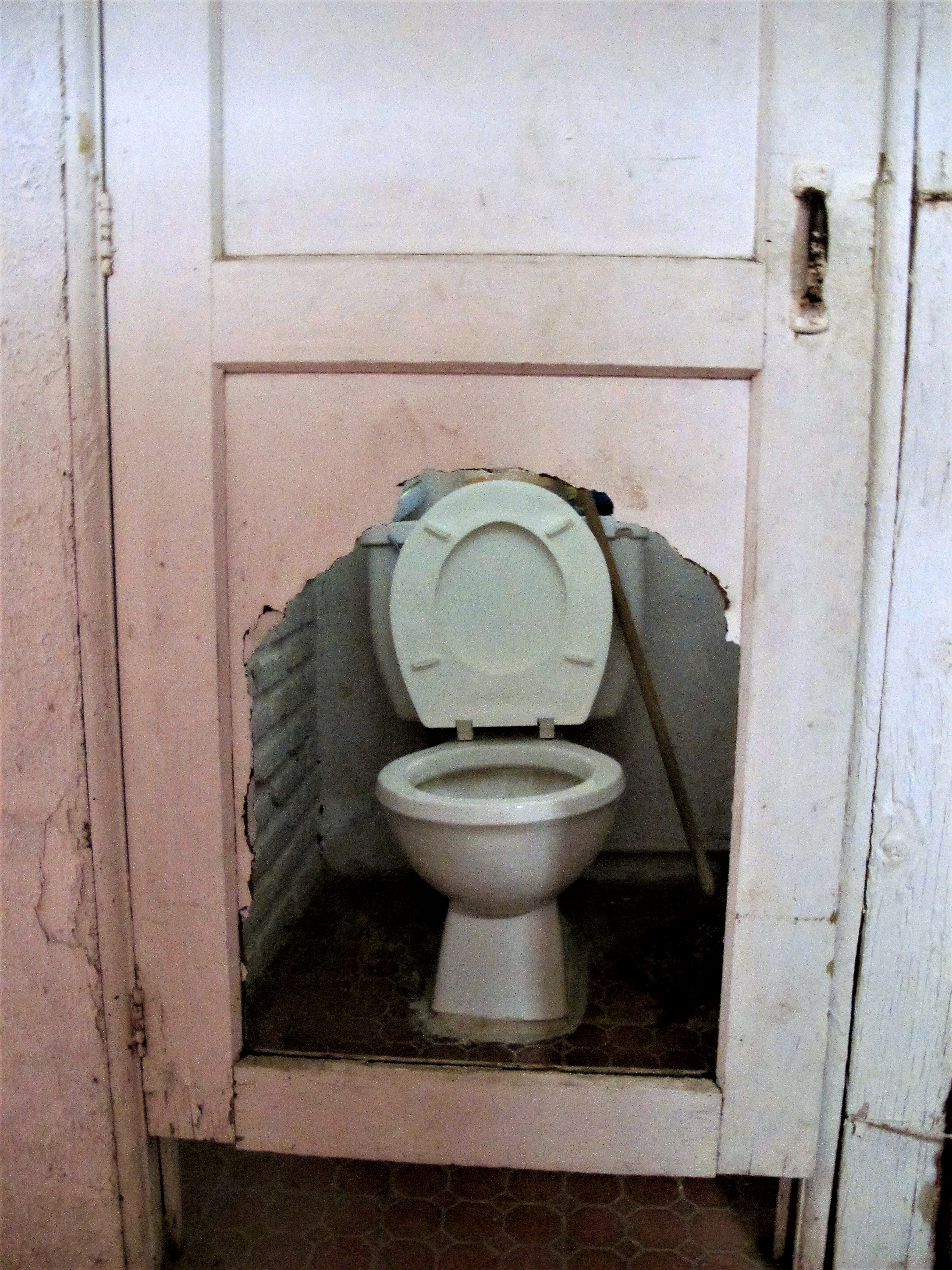
Adventurouspirits
The extraordinary UNESCO World Heritage city of Guanajuato is stunningly beautiful. Colourful houses cling to the mountainside overlooking the center of the town below. The cobble roads are narrow and wind through the town center and it is definitely not a town one would want to drive in.
Enlarge

Enlarge
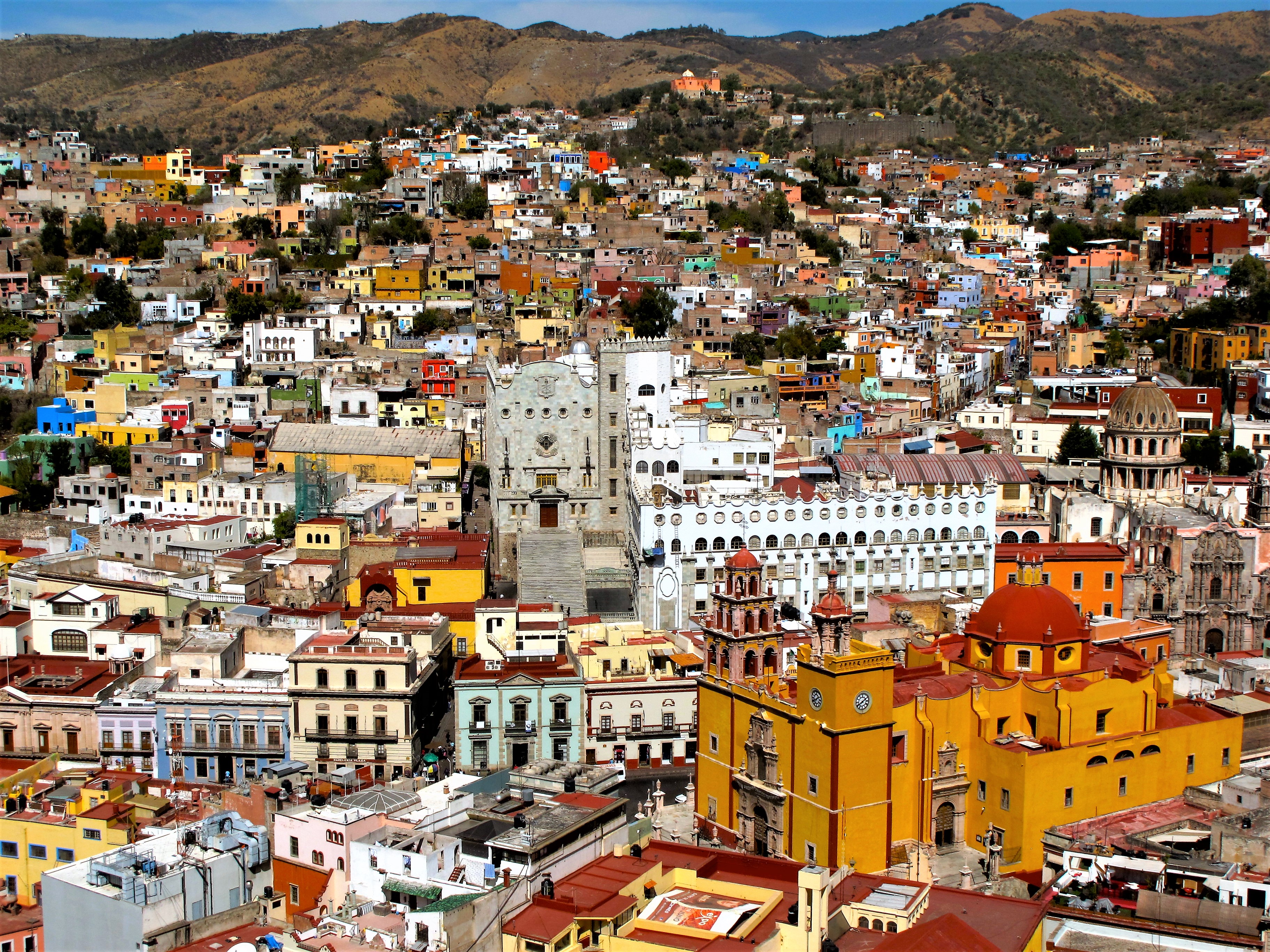
Adventurouspirits
Heading off we first went to the Regional museum of Guanajuato Alhondiga de Granaditas, which actually began its life as a massive grain storehouse. In 1810, it became a fortress for Spanish troops, it was attacked by the locals who despite being poorly armed were able to storm the fortress and kill the 300 people inside. It was the site of the first victorious struggle for Independence; however, the leaders who participated in battle were later captured and executed. Their heads were decapitated and were hung in metal cages at each corner of the fortress and left there for 10 years to discourage other independence movements. The heads remained hanging until Mexico achieved its independence, which were then taken down and put to rest under el Angel de la Independencia in Mexico City.
We wandered through the narrow cobblestones alleys and roads, exploring the city. It is full of romance, with balcony of the houses almost touching each other in Callejon Del Beso (Alley of the Kiss); children played with balloons tied to their legs in the plaza each trying to burst the other ones balloon, a musician serenaded us as we ate our lunch in the shadow of the Basilica of Guanajuato. We fell in love with this city, taking a ride up the funicular up the hillside we arrived at the top and gazed over the splash of colourful houses, cathedrals and plazas below in the valley and up the hillside. It truly is a city worth visiting.
Enlarge
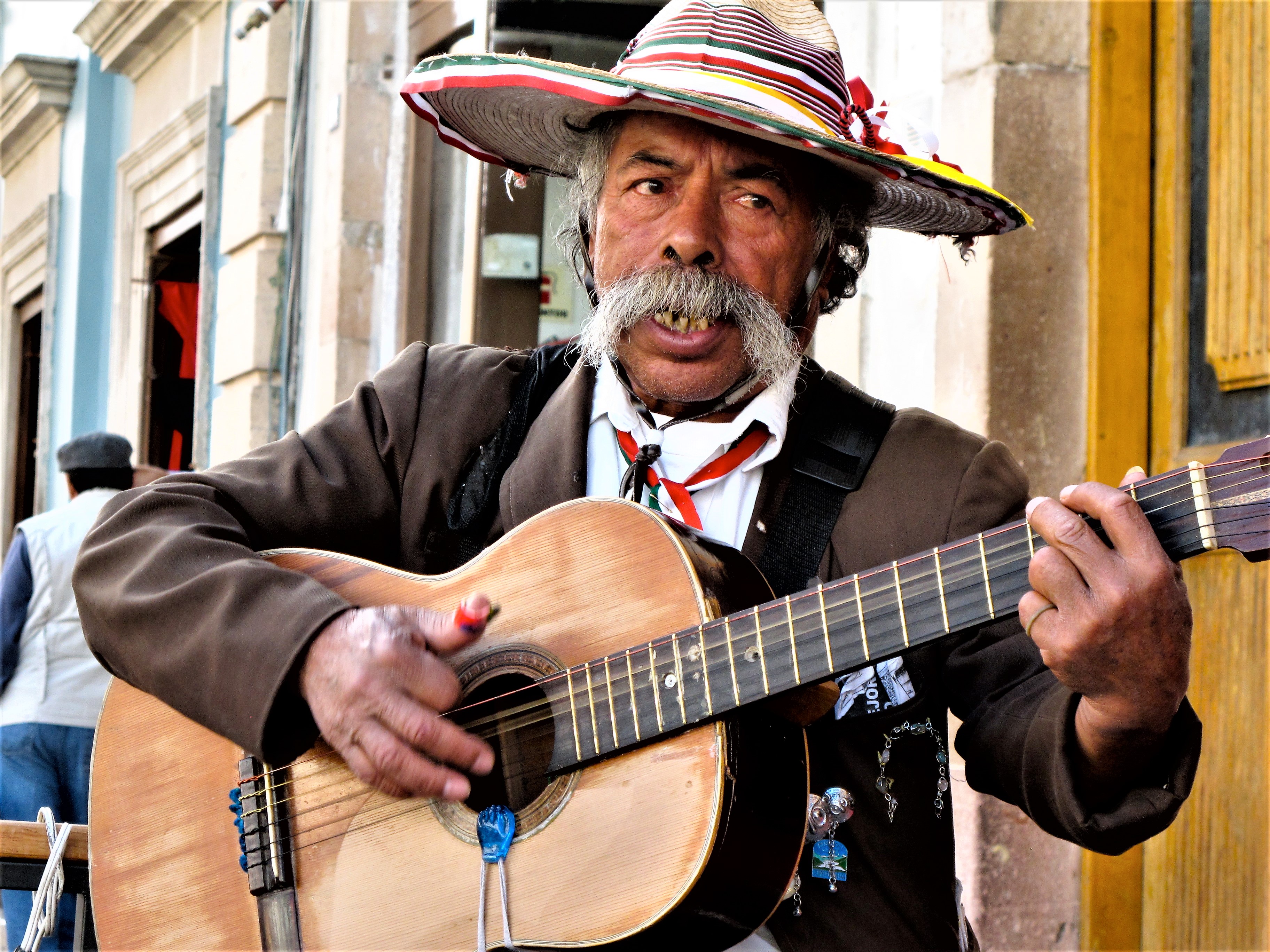
Adventurouspirits
Enlarge
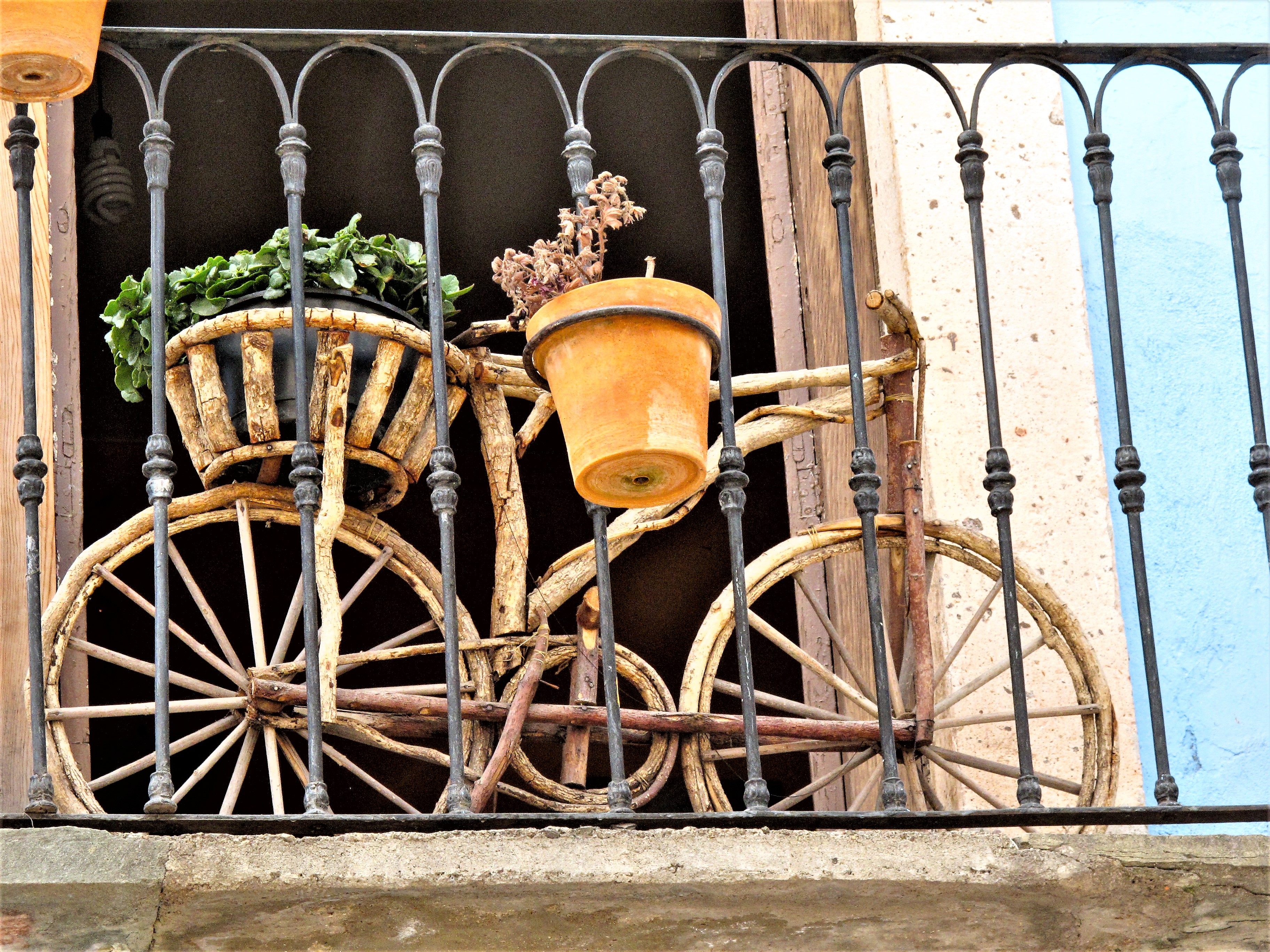
Adventurouspirits
Enlarge

Adventurouspirits
San Miguel de Allende is home to one of the largest American retiree communities in Mexico, in fact so many North American live here it even has its own USA consulate office.
It is not hard to see why so many North Americans choose San Miguel as their winter retreat. It is a beautiful city, with great ‘winter” climate. We spend our time joining the locals in the evening celebrating the anniversary of the signing of the Mexican constitution (national holiday). Mariachi bands and dancers in national costumes entertain the crowds. The plaza is so alive, families are out with their children and there is a joyful and fun atmosphere. Everyone seems to be having fun.
Enlarge

Adventurouspirits
Enlarge

Adventurouspirits
Enlarge

Adventurouspirits
Enlarge

Adventurouspirits
We are experiencing a side of Mexico that never makes the news media, Mexicans love to party, entertain and family. The town is full of art galleries, fancy hotels, great restaurants and colourful markets; it seems to be a town that is enjoying the benefits of an influx of foreign capital. However, what shocked us the most in San Miguel was the number of old women begging on the streets. They are on every corner, in fact at the main plaza while waiting to cross the road I counted 6 old women begging. We talked to a local about this and they admitted that it is a problem, and like us, they too wondered if it was all “organized.” It is the sad side of San Miguel de Allende.
Enlarge
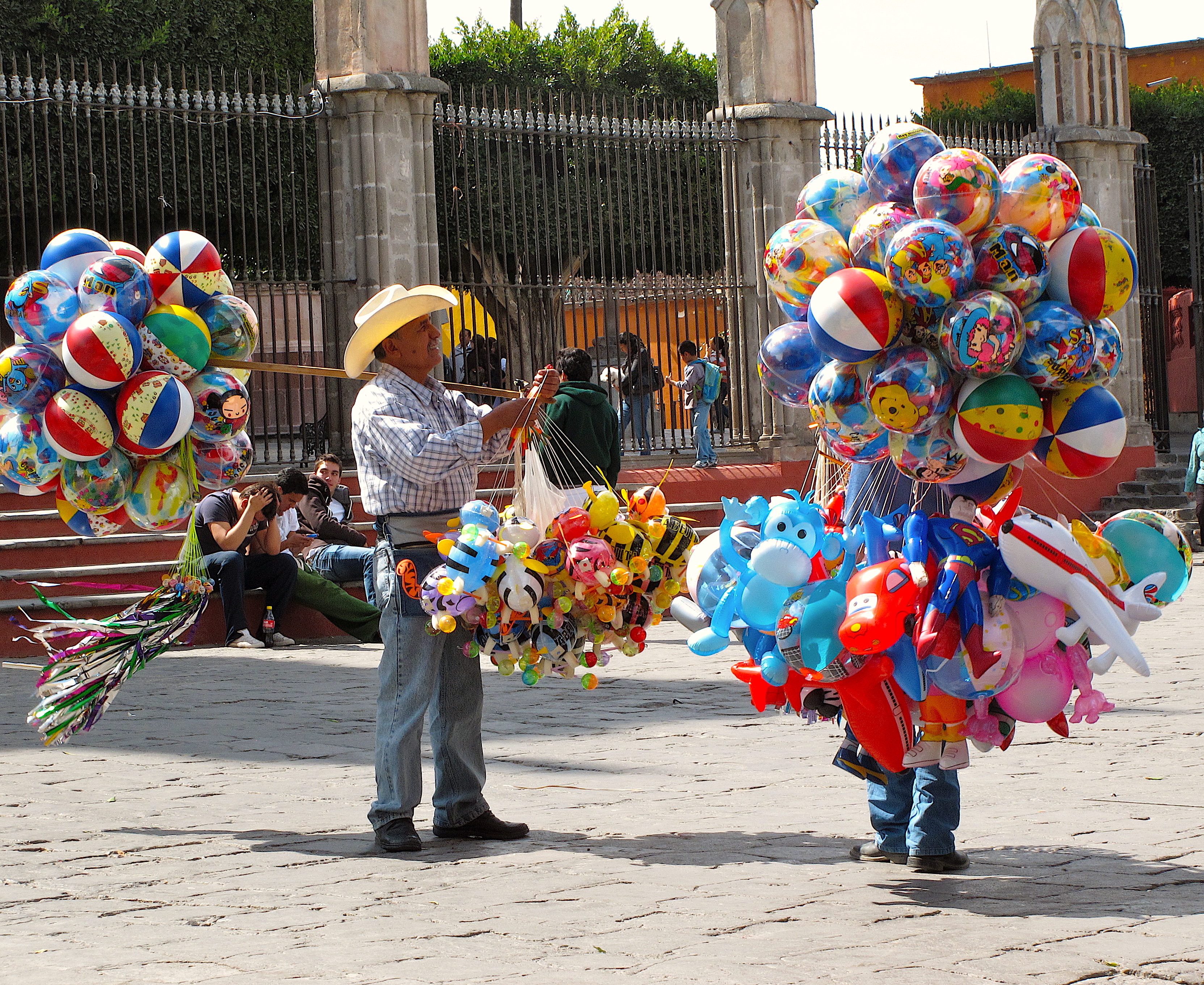
Adventurouspirits
Enlarge

Adventurouspirits
We also attend a concert at the local public library and are stunned, by the beautiful music, singing and dancing.
Enlarge
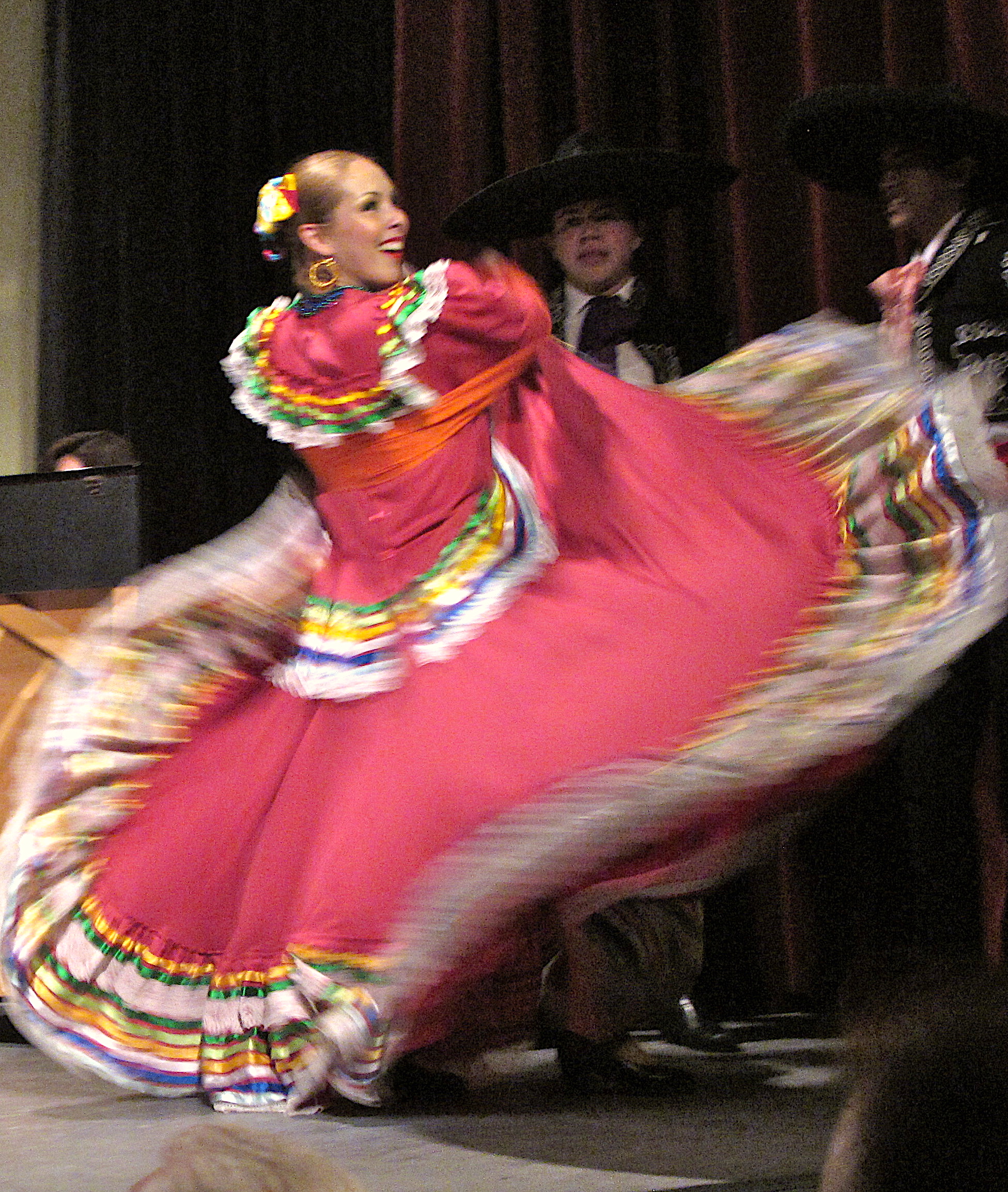
Adventurouspirits
Enlarge

Adventurouspirits
In San Miguel, we arranged to go to Michoacán state, to see the Monarch butterflies. Every year these pretty little insects fly all the way from Canada and Northern USA each on their own, with estimates of up to 150 million arriving to winter in the forests in the mountains between Toluca and Morelia in Mexico. It is a natural phenomenon, which boggles my mind, exactly how do these tiny creatures fly over 5000km across Canada, the USA and Northern Mexico? They were here and we wanted to witness this miracle of nature.
Enlarge
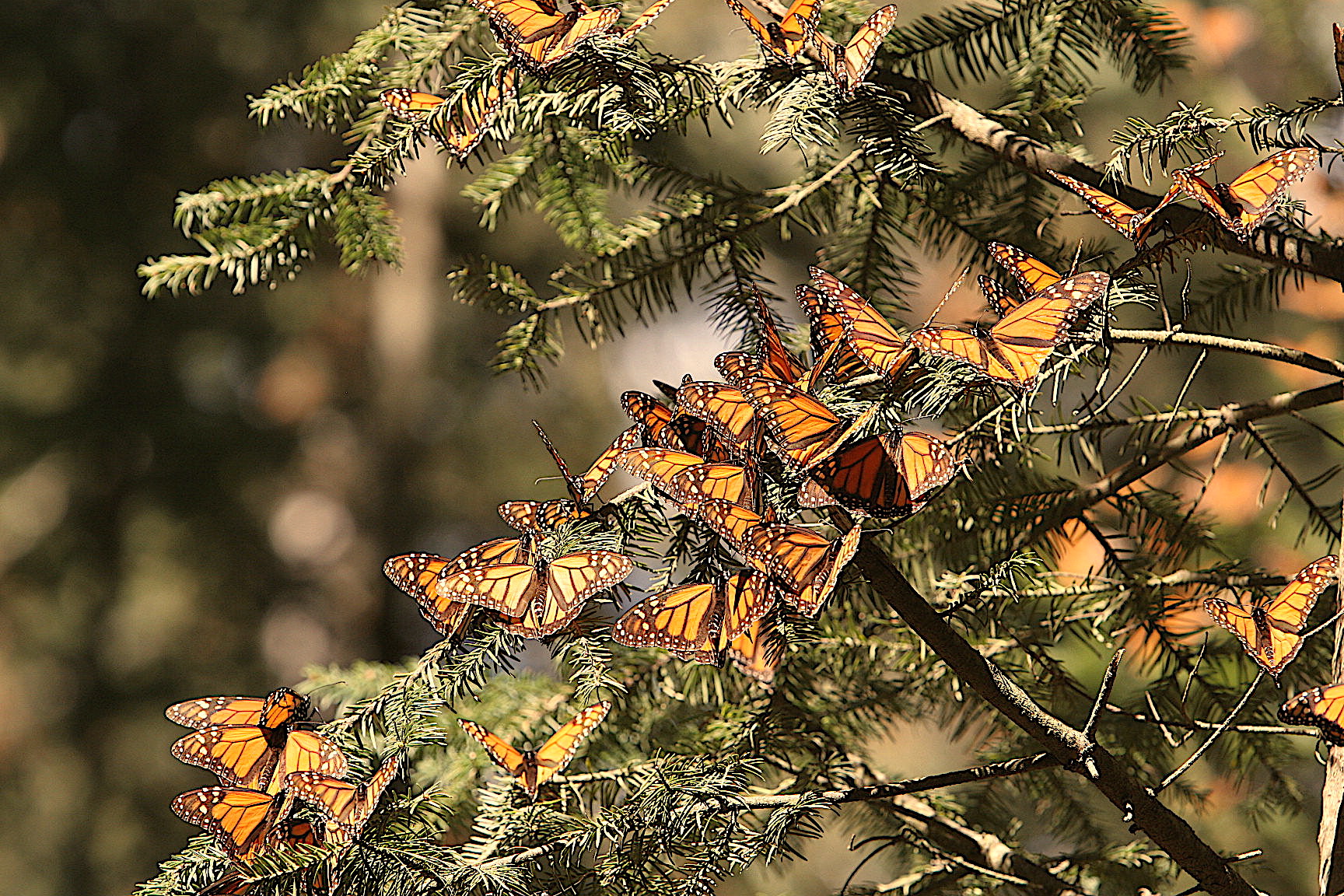
Adventurouspirits
We hired a guide, Rodrigo Lopes Valdes as we wanted to see the area where the some of the largest colonies of the Monarch Butterflies are located. A permit is required as the area is not open to tourists. We headed off to the El Rosario Monarch Butterfly Reserve hoping that conditions would be perfect for us to see the butterflies. The hike into the reserve and up the mountains is a grunt. It is steep and the altitude is high (3000m) so we were puffing and panting for several kilometres up the side of the mountain, but then we saw them and could not believe our eyes at what we were seeing. Millions and millions of Monarch Butterflies and the conditions were perfect. We were in butterfly heaven.
Enlarge

Adventurouspirits
Enlarge

Adventurouspirits
Enlarge
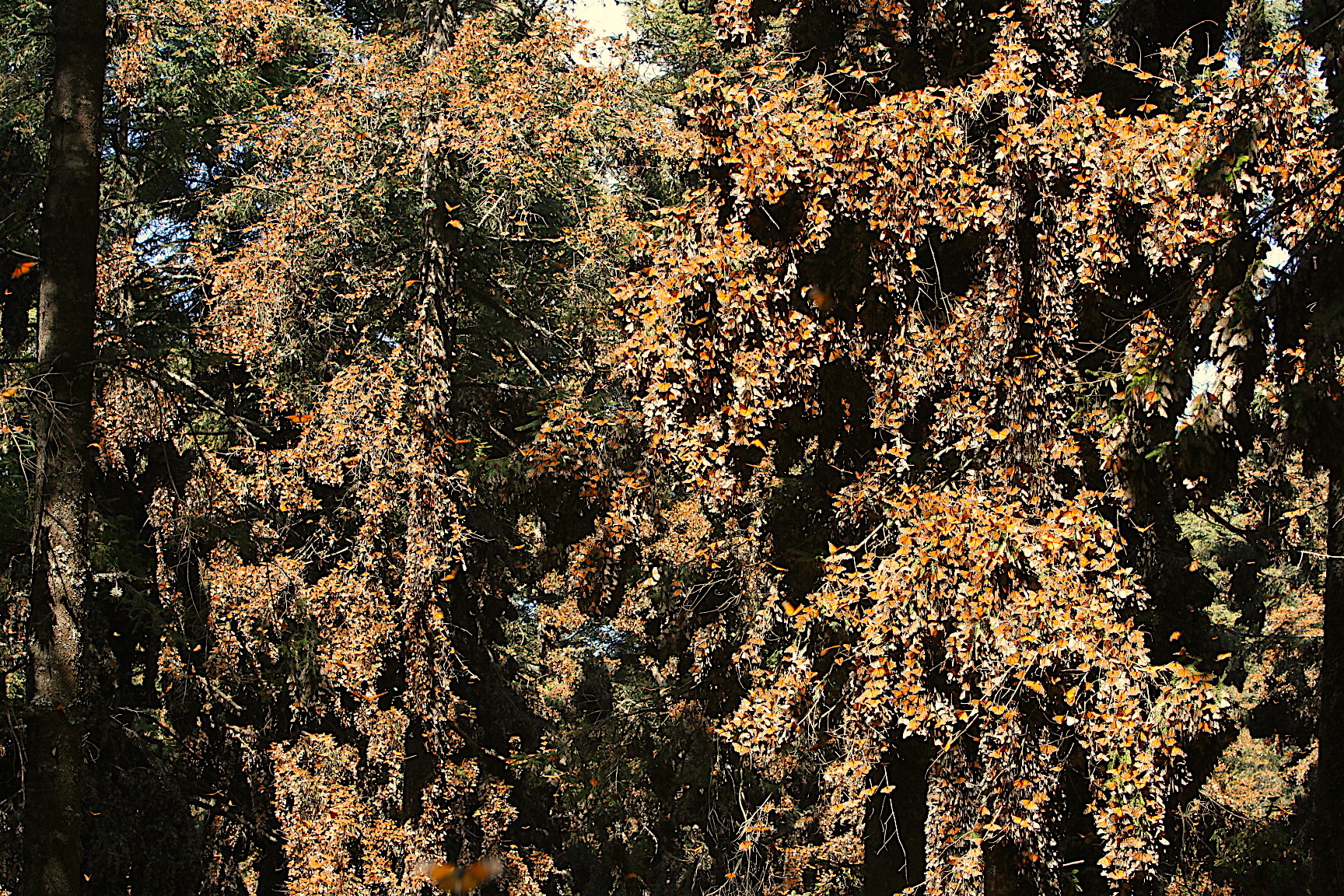
Adventurouspirits
Enlarge
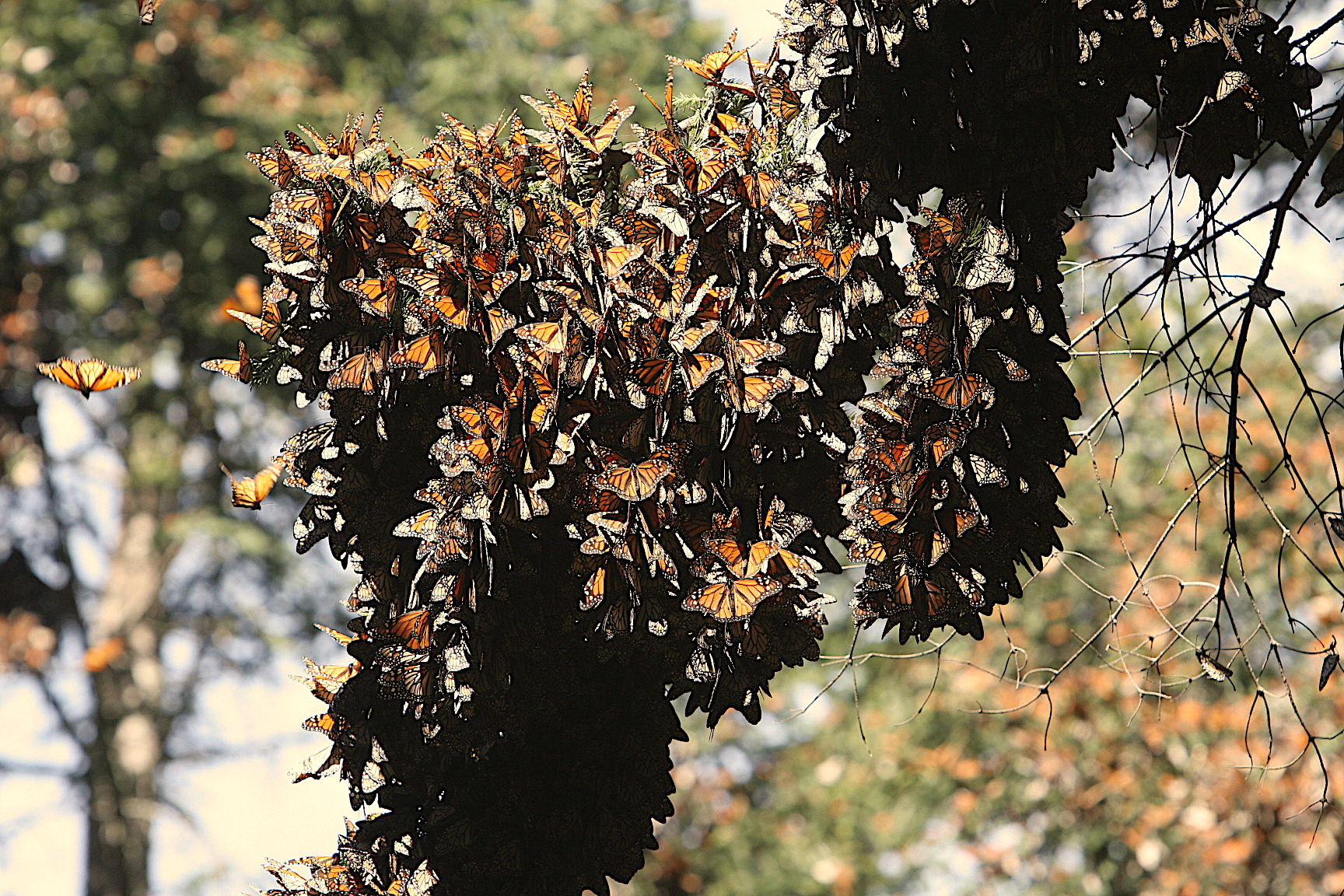
Adventurouspirits
Enlarge

Adventurouspirits
After saying a good bye to Rodrigo, we headed for Mexico City not quite sure how to tackle and explore the supposedly largest city in the world with estimates of over 20 million people. We were feeling both apprehensive and excited about seeing Mexico City and wondered what lay ahead for us.
Our guide Rodrigo Lopez Valdes was excellent and we spent two very informative days with him. His contact information is:
Mexico City is vibrating; it is a mosaic of colour, cultures, history, traditions and beliefs. We decided to park our truck camper just north of the city and book into a hotel in the historic district for a few days. It was an excellent decision, since it is supposed to be the largest city in the world with over 20 million people and driving through it would have been challenging. We boarded a bus to the train station, and then took a train into Mexico City where we caught the metro, and after three connections, made it successfully to our hotel. We could hardly wait to hit the streets and soon found ourselves standing in the main plaza watching Aztec dancers who were adorned with elaborate feathered headdresses, shell ankle bracelets and loincloths.
Enlarge

Adventurouspirits
The beating of their drums filled the air, their rhythms guiding the men and women chanting in Náhuatl dancing around and around. Local men and women were undergoing a “limpia”, a spiritual cleansing in the shadow of the large Cathedral Metropolitana. Here a healer blows a cloud of fragrant copal smoke towards the local person undergoing the spiritual cleansing. A green plant is brushed against their body and words are whispered into their ears. All around vendors sell their crafts and I feel as if we have stepped into another world.
Enlarge
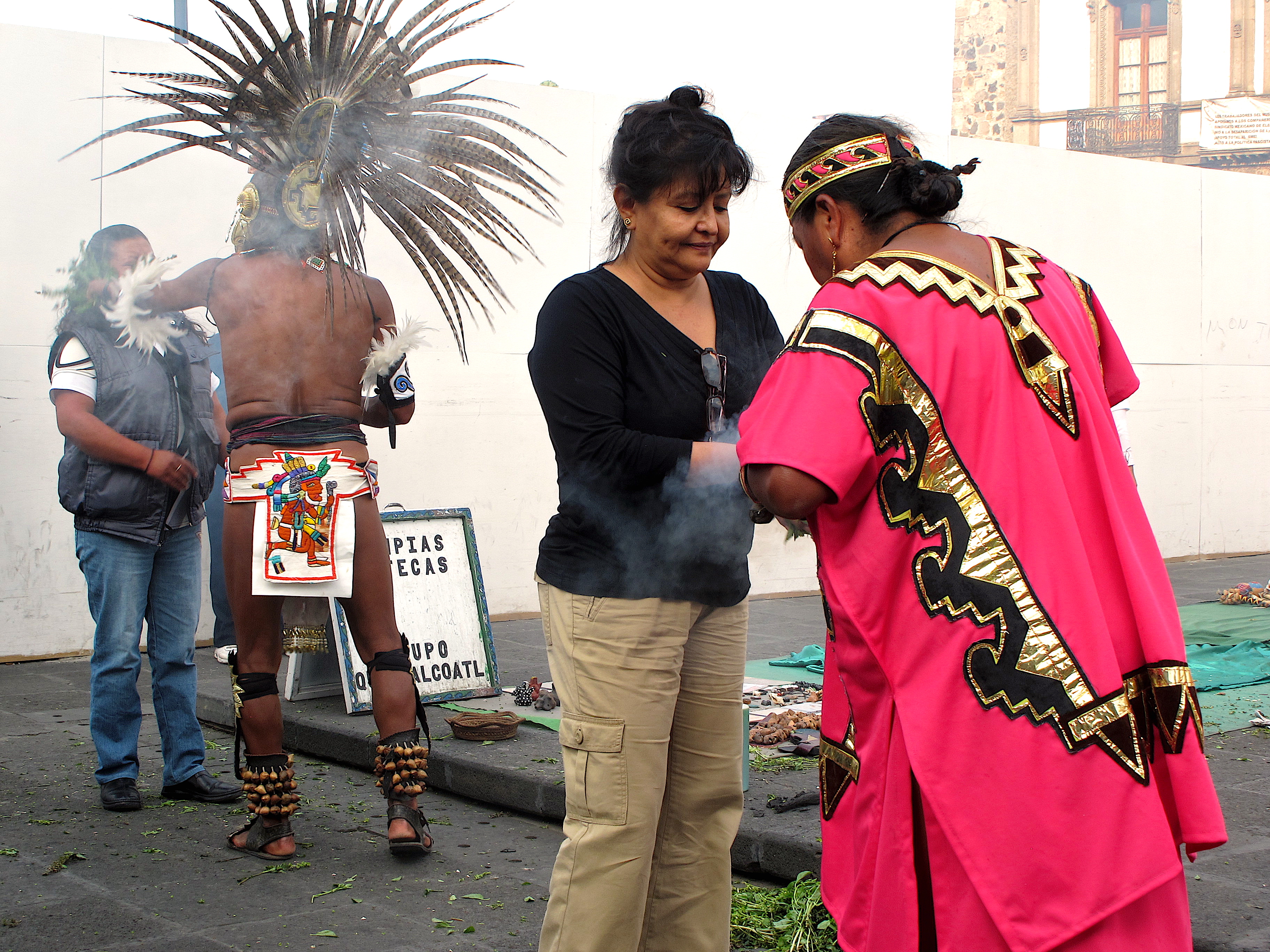
Adventurouspirits
Enlarge
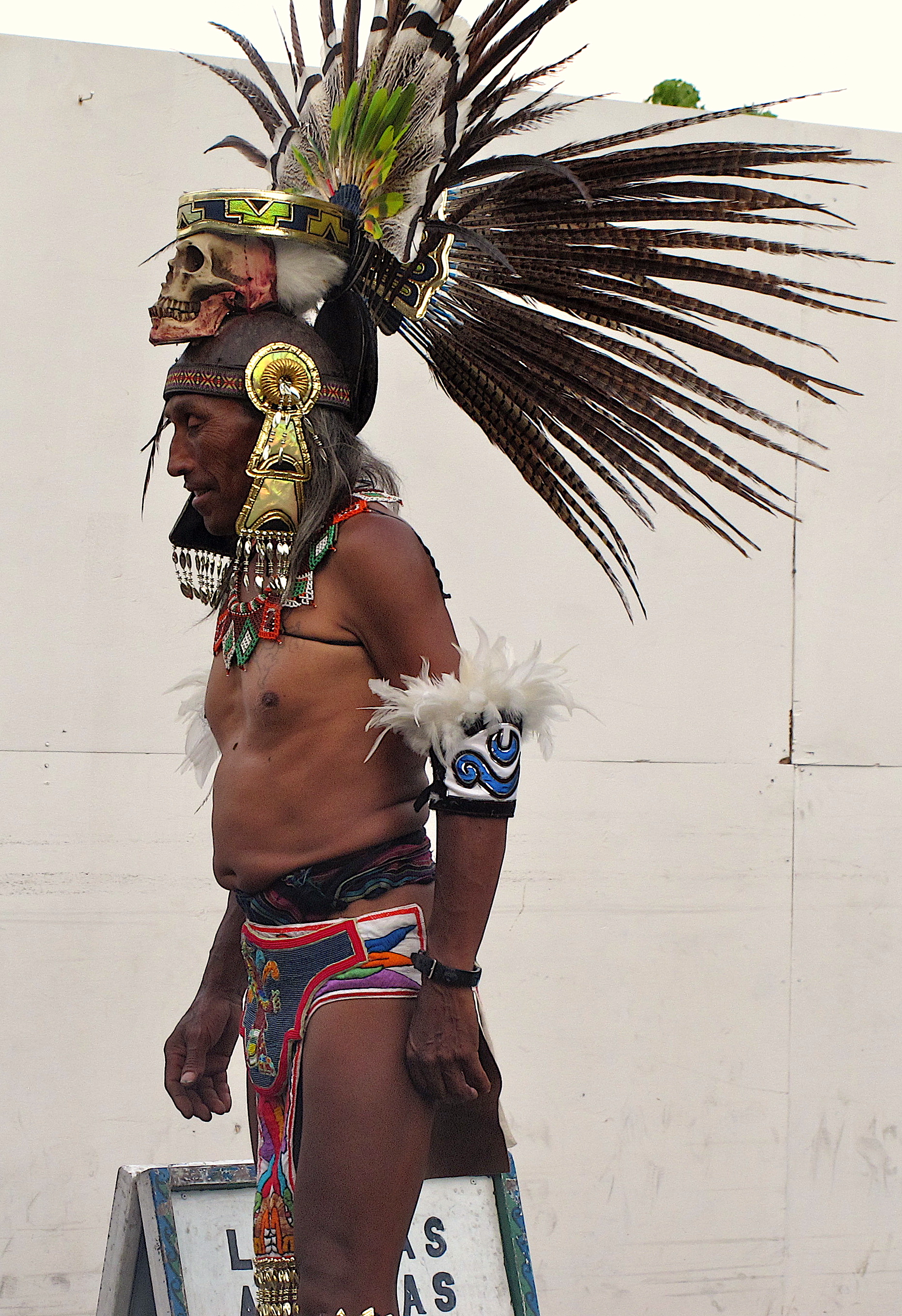
Adventurouspirits
Enlarge

Adventurouspirits
Alongside all these activities, the excavations of the Aztec Templo Mayor continue to this day. The museum is excellent and we are amazed at the Coyolxauhqui, one of Mexico’s most beautiful and impressive artefacts.
Enlarge
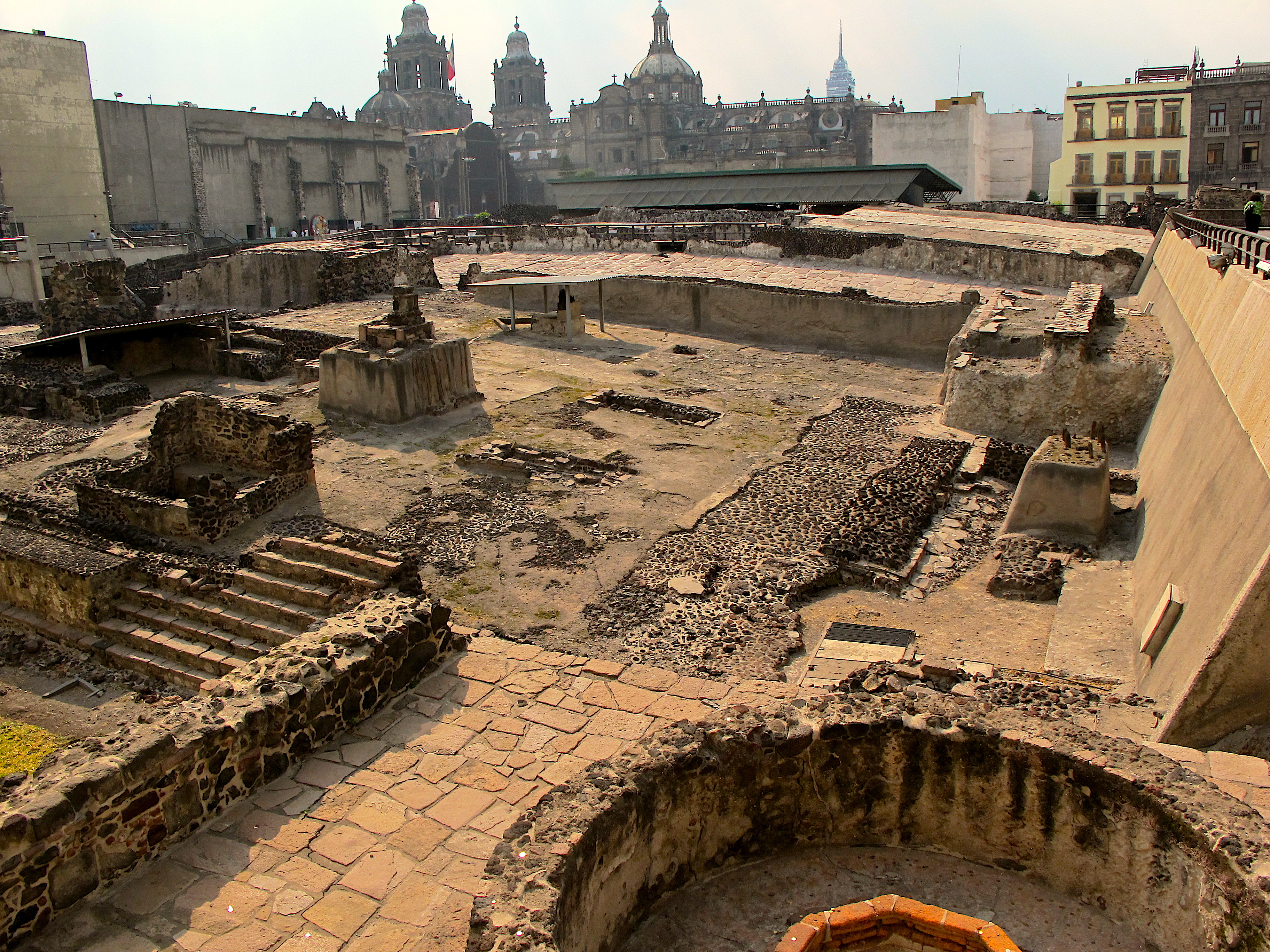
Adventurouspirits
Enlarge

Adventurouspirits
We walked along the Paseo de La Reforma on Sunday one of Mexico City’s grandest boulevards and we are surprised to find it had been blocked off to traffic and the locals were out on their bicycles, roller blades, jogging and walking their dogs along the boulevard.
Enlarge
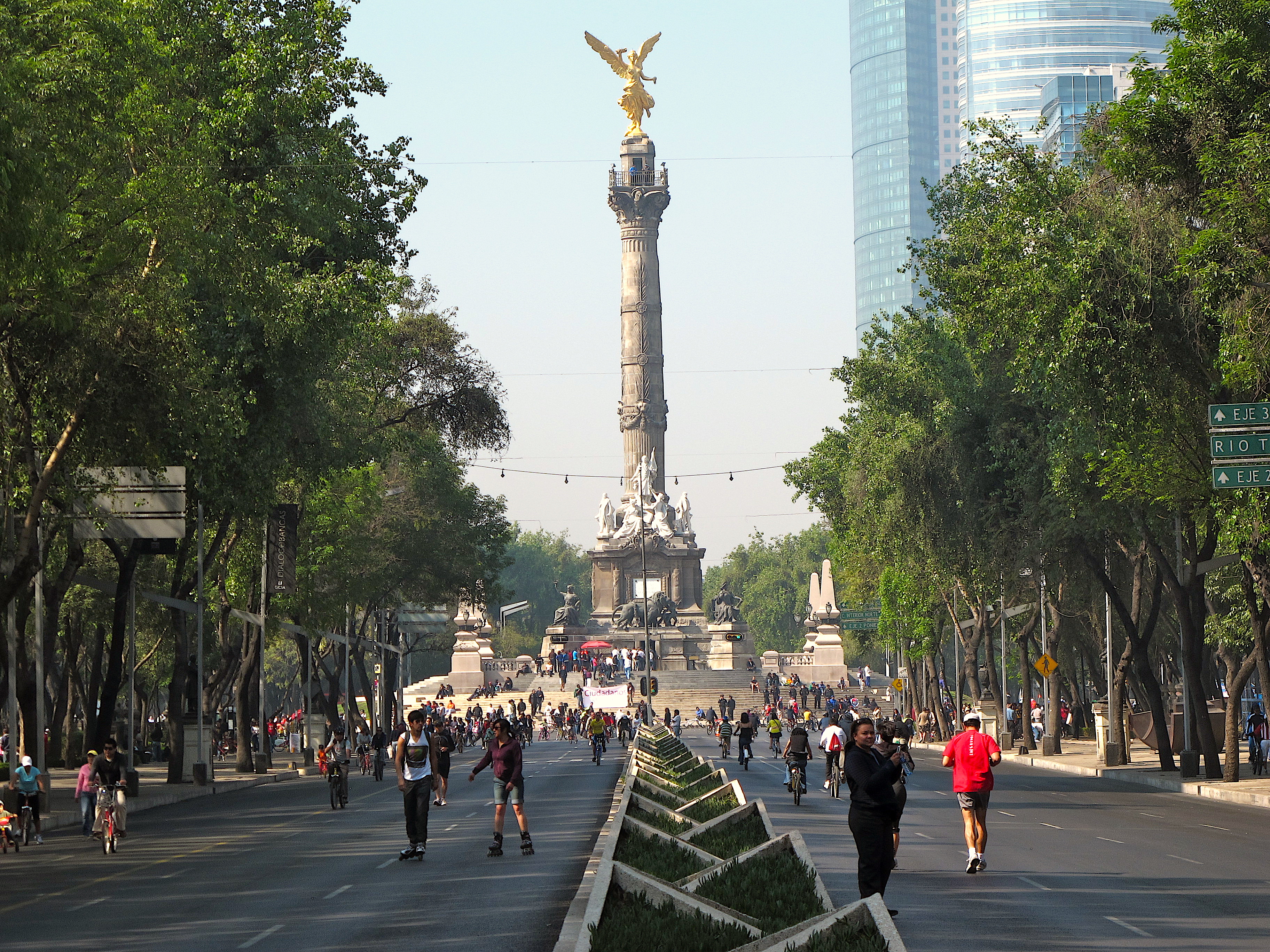
Adventurouspirits
Enlarge
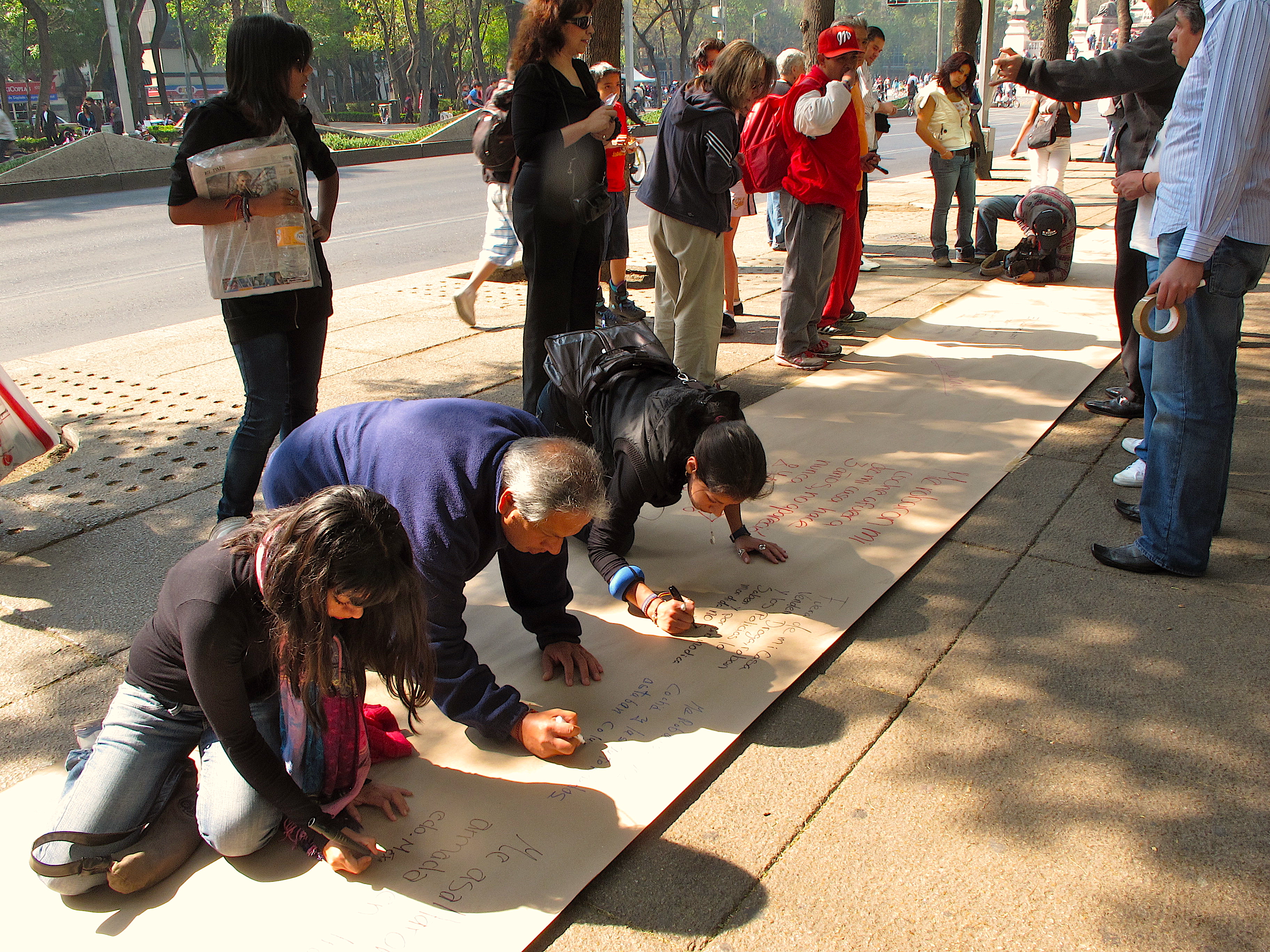
Adventurouspirits
Enlarge

The stunning Cathedral in Mexico City
Adventurouspirits
Enlarge
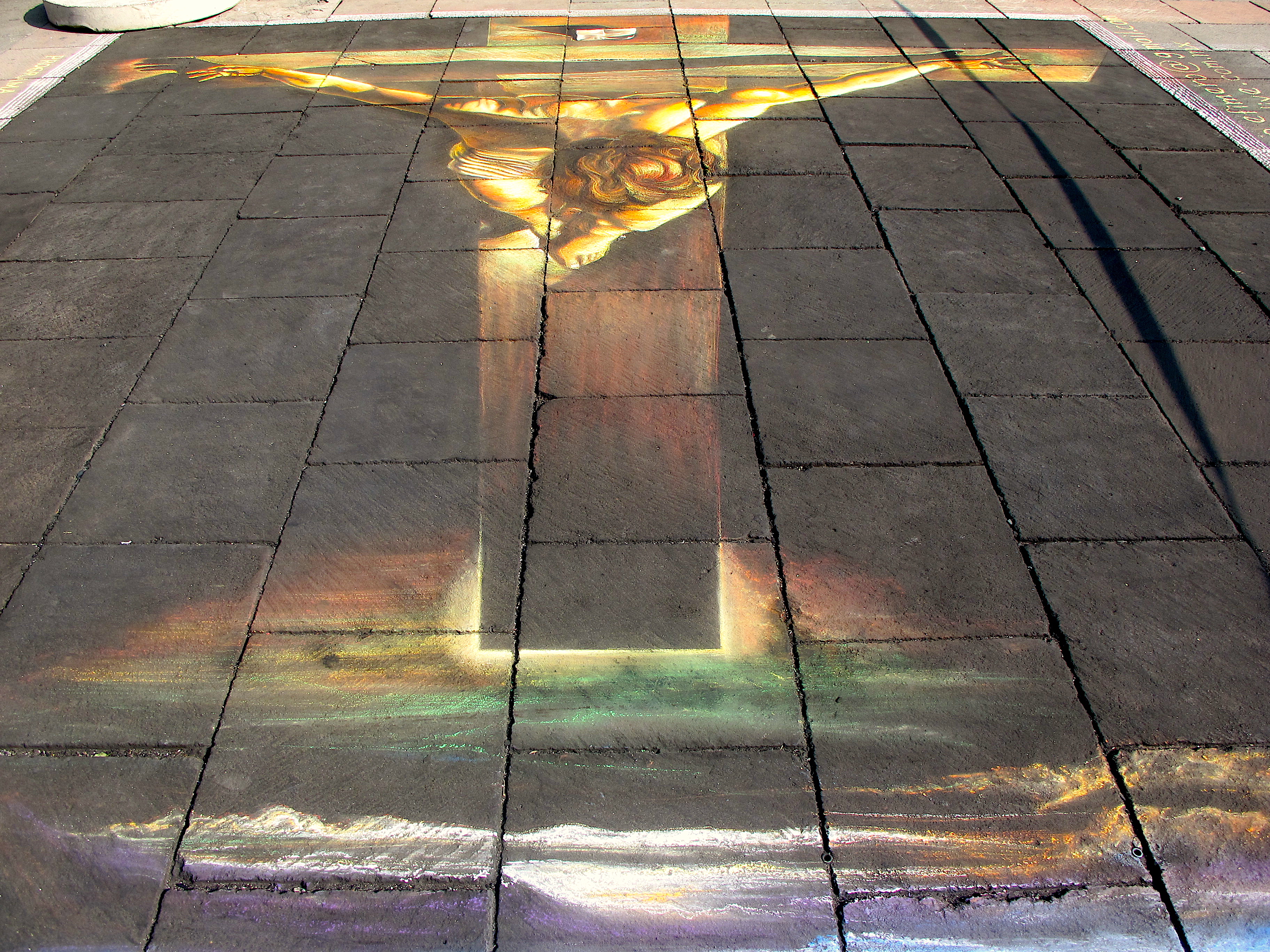
Adventurouspirits
We stopped beneath symbol of Mexico City the Monument a la Independencia also known as the “El Angel.” In Mexico City’s largest park (more than 4 sq km) Bosque de Chapultepec, we visit the fabulous Museum of Anthropology learning yet more about this magnificent country. However, what fascinated us the most is that Mexico City is sinking.
Enlarge

Adventurouspirits
Enlarge
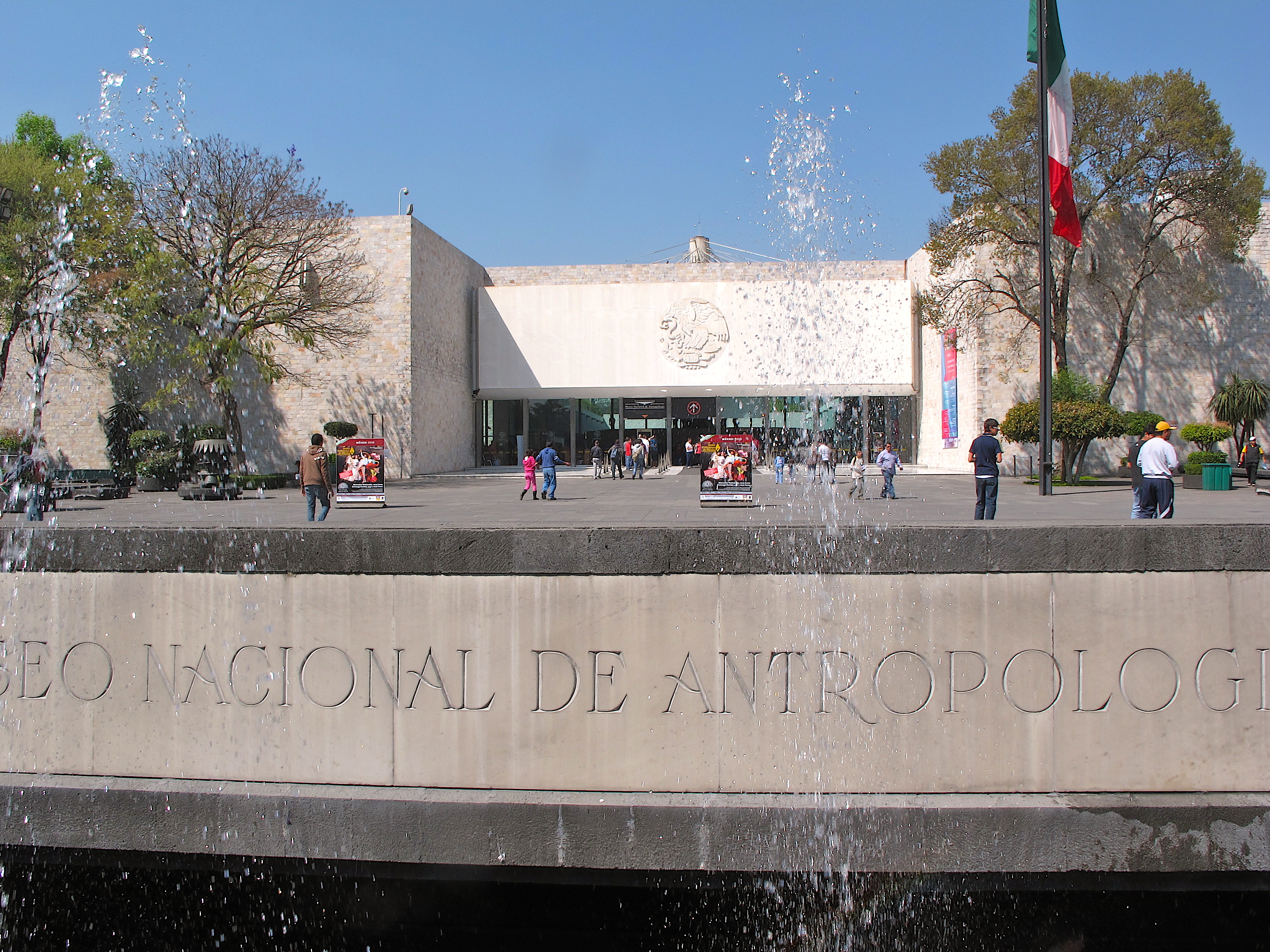
Adventurouspirits
The Aztec founded Mexico City in the 1300s on an island in the middle of Lake Texcoco. The population soon outgrew the little island so it was expanded by building artificial islands and a network of canals. However when the Spaniards arrived in 1500s they decided to drain most of the lake, bad idea to continue to develop a city on a drained lake! What were the city planners thinking?
It is estimated that during the last 20th century the city has sunk approximately 9-11 m (30-39 feet) which is a lot more than the city of Venice in Italy.
The city continues to pump water from the aquifers below the city, which were part of the original lake but they are pumping more water than is being replaced by natural sources. We stood in front of the majestic cathedral and debated was it really tilting or was it our imagination, is it too sinking?
Teotihuacán, situated north of Mexico City are the ruins of Mexico’s biggest pre Hispanic empire. If only the walls could talk about this ancient city, what tales would it tell us? As we explored the ruins, climbed the two great pyramids I wondered what happened in Mexico’s largest ancient city. I imagined the stories of love, battles, human sacrifices, ancient rituals and beliefs. We were fascinated by their knowledge of maths, astronomy, physics and construction. The Pyramid of the Sun is the world’s third largest pyramid, built around AD100. Eventually the empire collapsed I guess nothing is forever.
Enlarge
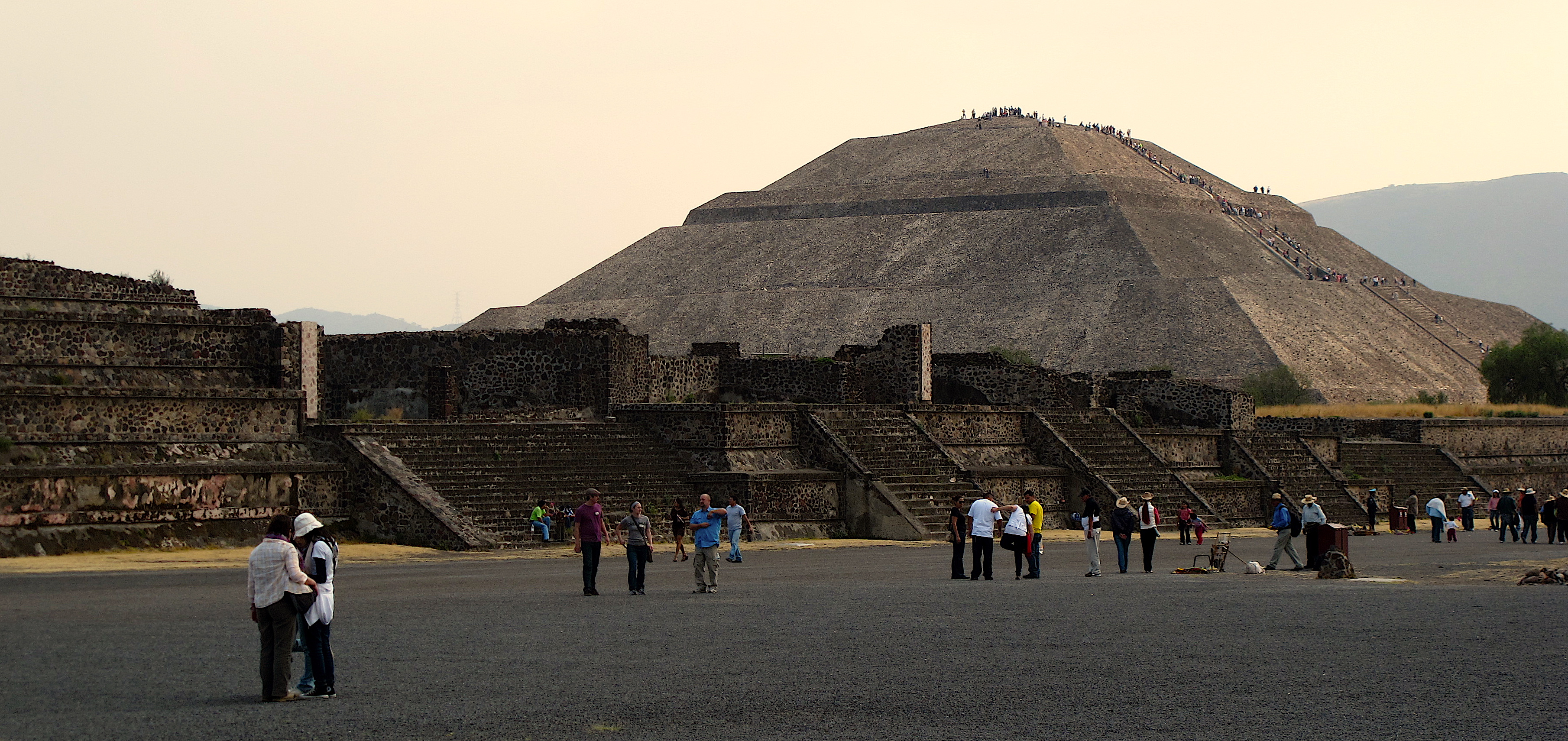
Adventurouspirits
Enlarge
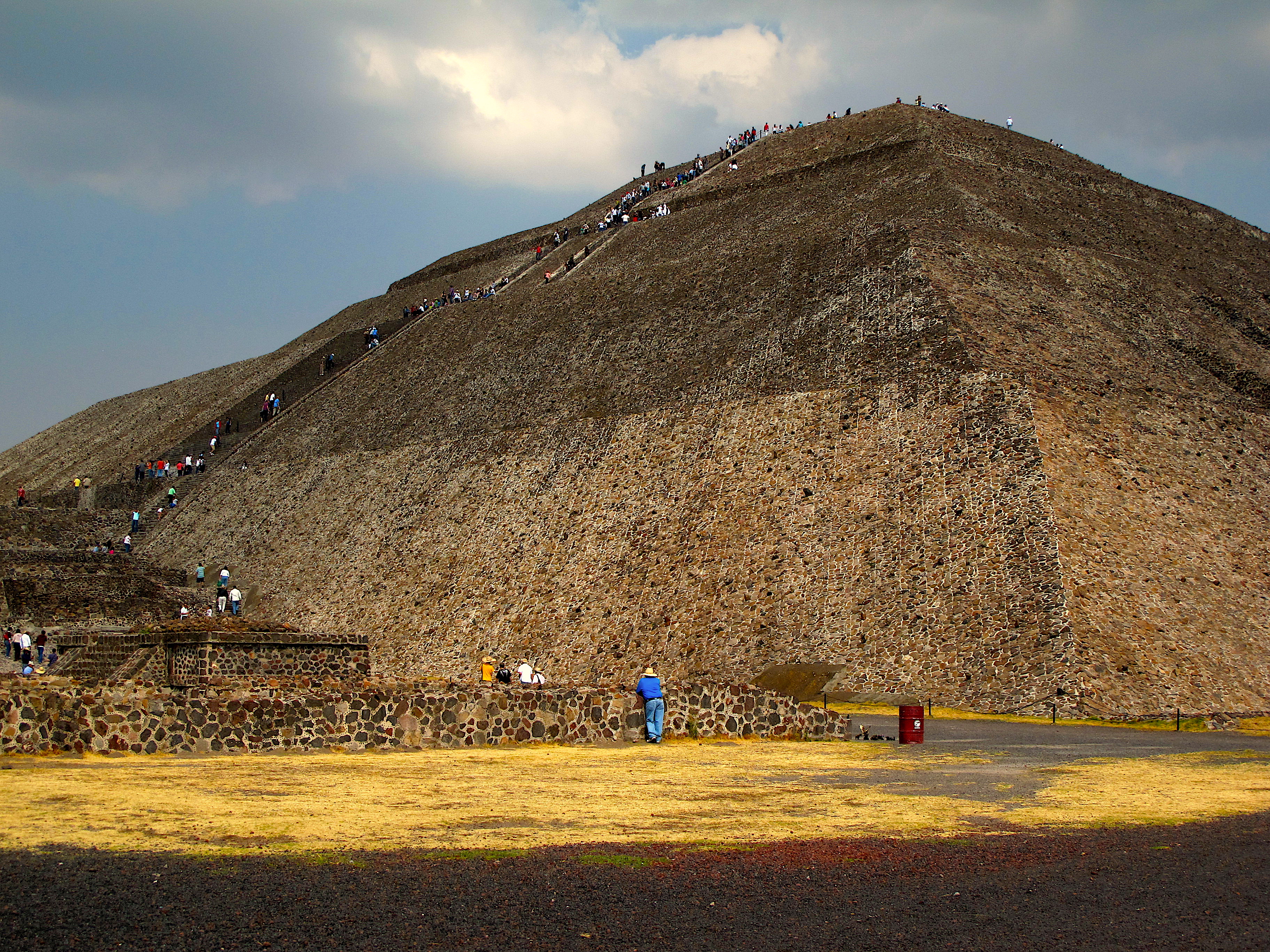
Adventurouspirits
It was time to say good-bye to Mexico City and the surroundings and we headed east towards the Caribbean coast. As we drive towards Puebla, we notice the Popocatépetl volcano smoking in the distance. My geologist was a happy man, an active volcano. “That’s so cool,” he claimed.
In Puebla, we set off to see the cathedral with the “must see” chapel, the Capilla Del Rosario. At the time of its completion in 1690, this exquisite Baroque masterpiece became known as the eighth wonder of the world. We have seen many cathedrals in our days of travel and this has to be one of the most elaborately decorated chapels. We explore the city and it is charming but there is a sense of sadness, as we know that our days in Mexico are ending.
Enlarge
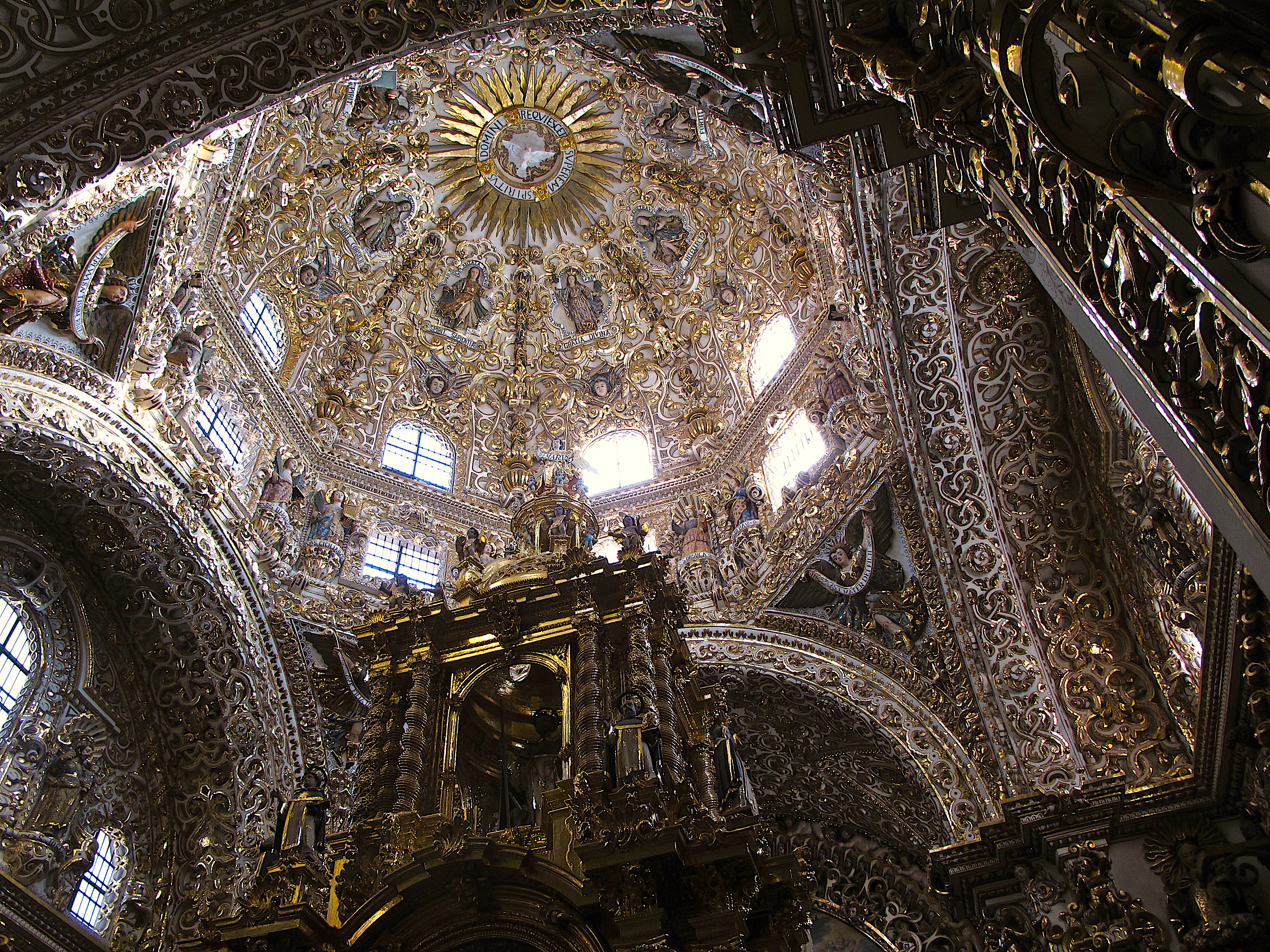
Adventurouspirits
Enlarge

Adventurouspirits
We celebrate our arrival on the Gulf of Mexico. Tucked away on the eastern shore of Lake Catemaco high in the jungle covered Tuxtla Mountains and settle down to do some route planning for Central America. We are enjoying the lush greenery, the colourful birds and the peace and quiet of the countryside. We have some big decisions to make, as we want to be through Central America before the rainy season starts in April and we are behind schedule. Mexico has been more than we anticipated and we have spent much longer here than we planned. We know we have to move on but we will be back to visit Mexico in the future.
We spent our final days of Mexico exploring the Palenque and Becan Mayan Ruins. We arrived at the campsite at Palenque, which was packed with “magic mushroom happiness” campers. Both young and old people either resting on hammocks hung beneath the palapas or simply lying stretched out on the coolness of the grass. Beat up campers and tents packed the campsite, we had not seen so many campers since we left Canada. It was a lovely campsite with a beautiful pool; all tucked away in the jungles which surround the Palenque Mayan ruins, birds chattered in the trees and howler monkeys screamed in the distance.
We spent our final days of Mexico exploring the Palenque and Becan Mayan Ruins. We arrived at the campsite at Palenque, which was packed with “magic mushroom happiness” campers. Both young and old people either resting on hammocks hung beneath the palapas or simply lying stretched out on the coolness of the grass. Beat up campers and tents packed the campsite, we had not seen so many campers since we left Canada. It was a lovely campsite with a beautiful pool; all tucked away in the jungles which surround the Palenque Mayan ruins, birds chattered in the trees and howler monkeys screamed in the distance.
Enlarge

Adventurouspirits
Palenque is one of the most extraordinary Mayan ruins and we loved it despite the fact I thought I was going to die climbing up and down those stairs in the sweltering heat. It was hidden away in the jungle before being discovered more than a 1000 years after it’s reached its apogee. The complexity of the culture is still being explored by archaeologists, hieroglyphics reveal some secrets, but we will probably never truly know all what happened within the walls of the temples, palaces and other buildings.
Enlarge

Adventurouspirits
As we drove towards Chetumal we past several more Mayan ruins and spent some time exploring others but our focus was now turning towards Belize and we were keen to explore a new country.
Enlarge
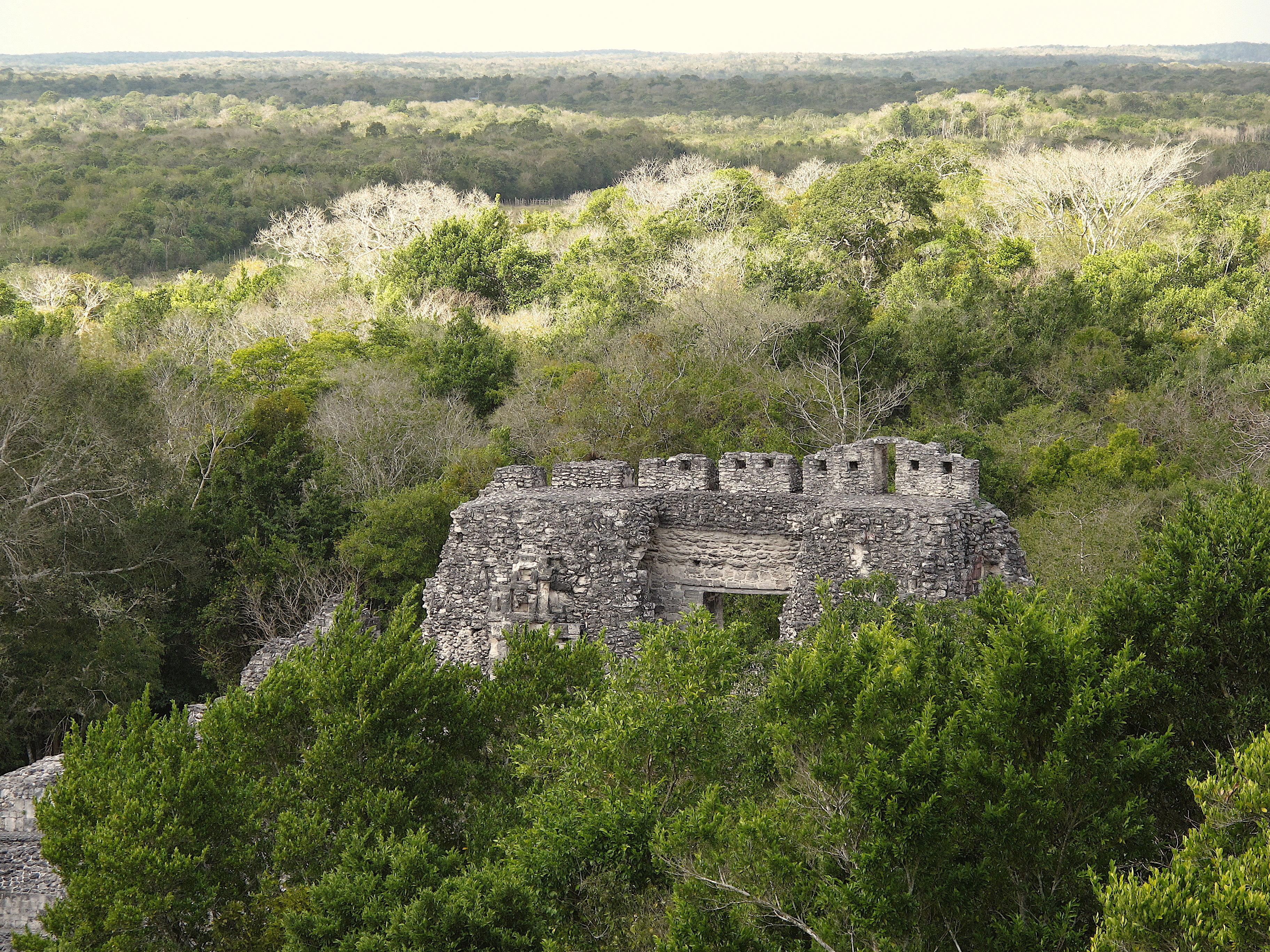
Adventurouspirits
Enlarge
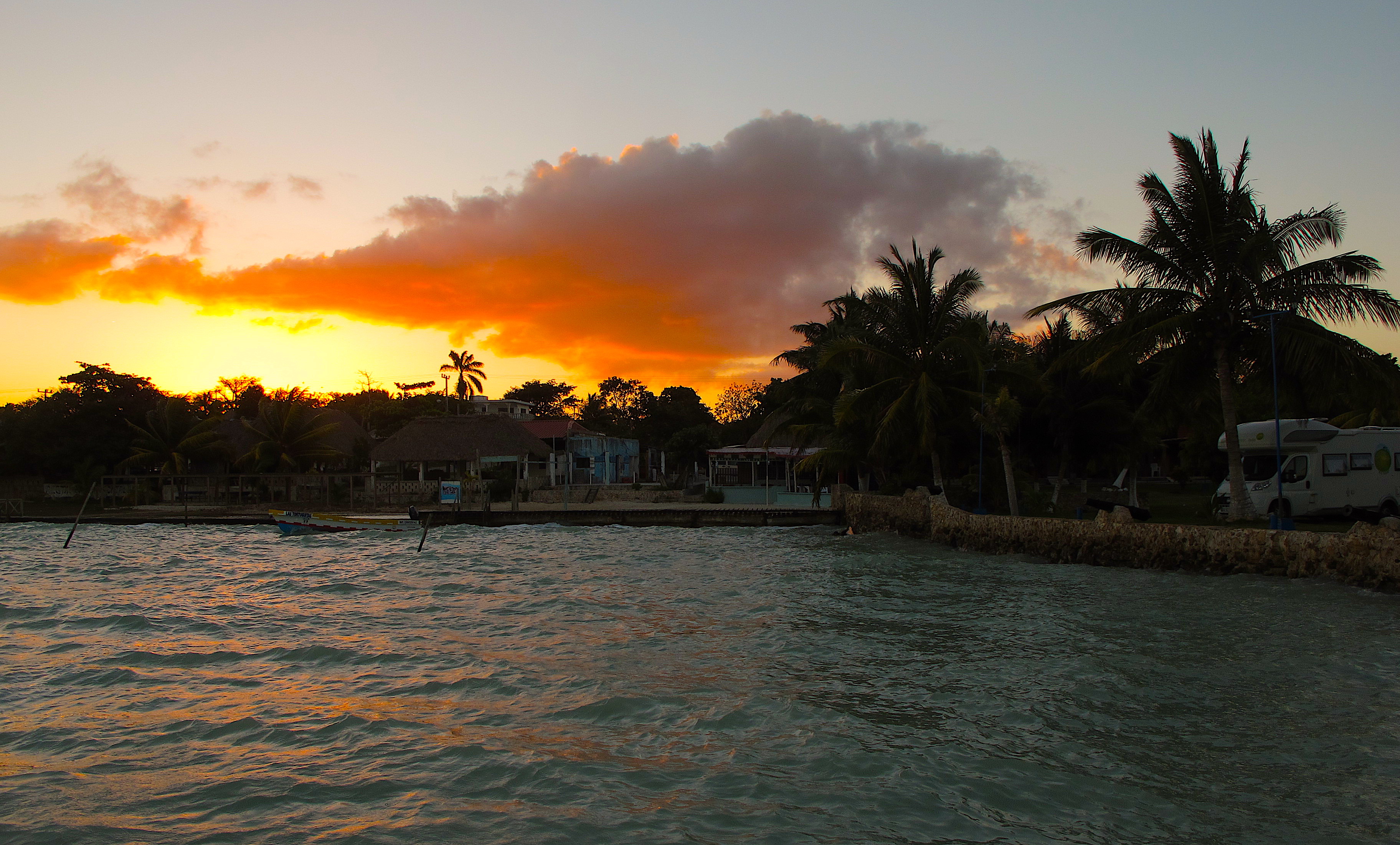
Adventurouspirits

Great music pick-I really like Paco de Lucia. 🙂
Had fun watching the video-the whales look amazing. You guys are seeing so many wonderful things.
FIL, you should take up free-diving. Apparently you have a knack for it.
Enjoyed watching you guys dancing at the end.
Love,
DIL
Love the puppy and the underwater shots!
Enjoyed the video and slightly ever so envious. Weather forecast for Colorado Springs; tonight 9F, tomorrow highs 12F, tomorrow night -10F, winter storm weather hazard warning in effect. Watching you two hanging out on the beach, in shorts, playing in the water has me wanting to winter over in Baja. Looks like you two are having a lot of fun.
Hey Tom & Jan, we’re getting ready to ship to the mainland and we’re considering using TMC Ferry also. I realize it was ages ago, but do you remember if there was an additional fee for having an extra passenger in your vehicle? Looking at the website, under additional cargo they charge 850 pesos “per persona”, for “ayudante de operador”. Not sure if that’s meant for an additional passenger or not. We’d appreciate the info!